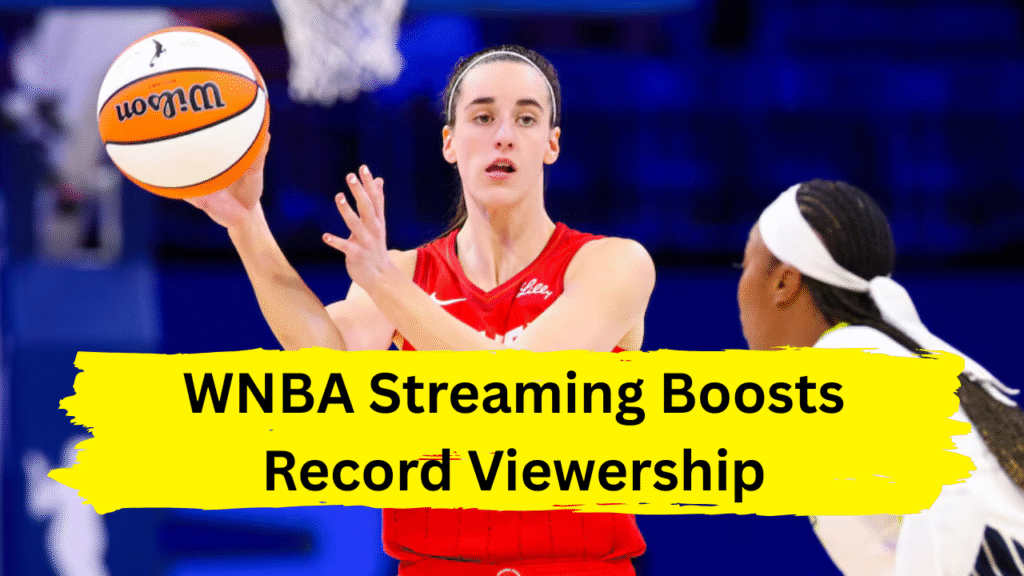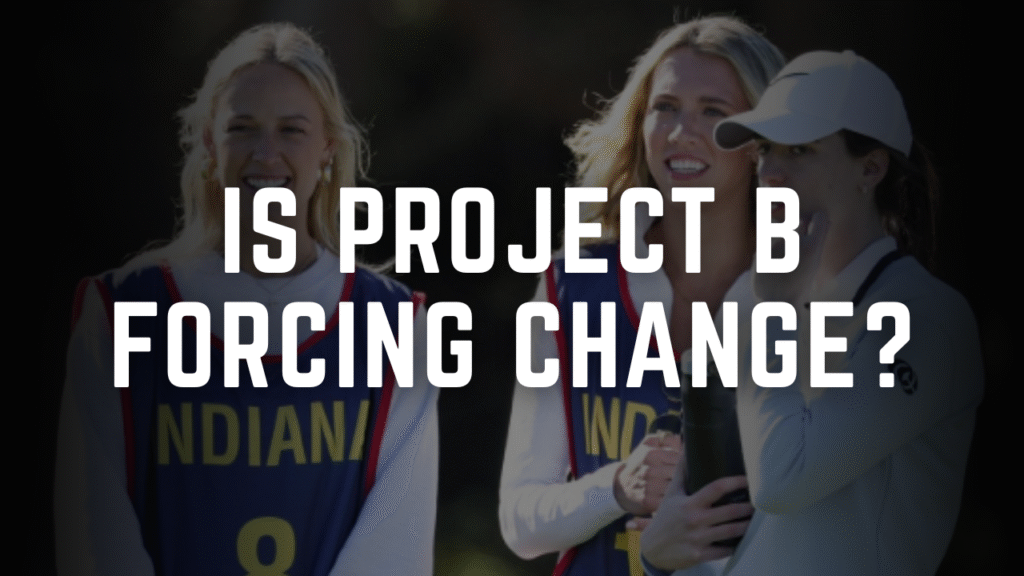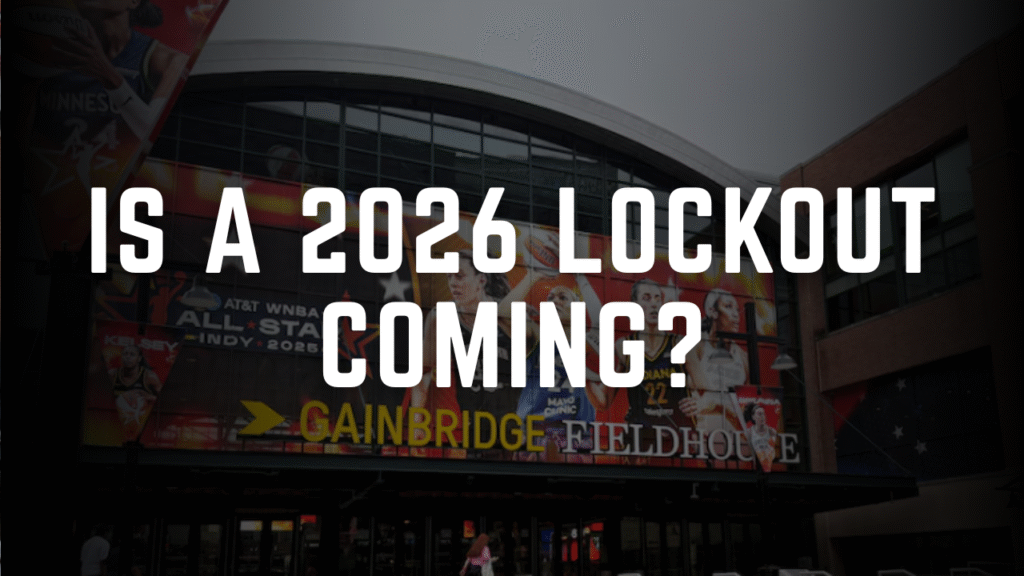For decades, the WNBA’s preseason games existed in the shadows—practically invisible to fans outside arena walls. But in 2025, the league flipped the script, transforming its preseason into a global spectacle. By broadcasting every preseason game nationally for the first time—a move fueled by streaming innovation and star power—the WNBA has ignited a viewership boom, proving that accessibility isn’t just a buzzword. It’s the catalyst for a new era of growth. At the heart of this revolution? Caitlin Clark’s emotional homecoming in Iowa, a game that epitomized the league’s bold strategy to meet fans where they are: online, on-demand, and everywhere in between.
The Preseason Paradigm Shift
Historically, WNBA preseason games were logistical afterthoughts. Only one preseason matchup had ever aired nationally before 2025—a 2019 Liberty vs. China exhibition . This year, the league shattered norms, partnering with ESPN, ION, and Amazon Prime Video to televise all preseason games, including international matchups and college homecomings. The shift reflects Commissioner Cathy Engelbert’s vision to “create appointment viewership” by simplifying how fans engage with the sport .
The strategy worked. Fans tuned in en masse to watch rookies like Paige Bueckers debut for Dallas and veterans like Sabrina Ionescu return to Oregon’s Matthew Knight Arena. But no moment captured the cultural zeitgeist like Caitlin Clark’s return to Iowa’s Carver-Hawkeye Arena. The Fever’s preseason clash with Brazil drew unprecedented attention, airing on ESPN and streaming via ESPN+—a symbolic full-circle moment for Clark, who shattered NCAA records on that very court .
Caitlin Clark’s Homecoming: A Case Study in Fan Connection
Clark’s preseason homecoming wasn’t just a game; it was a masterclass in storytelling. After missing the Fever’s opener due to injury, her return to Iowa City became a must-watch event. ESPN’s broadcast leaned into nostalgia, replaying clips of her collegiate dominance while 14,000 fans—many wearing No. 22 Iowa jerseys—roared as she drained her first three-pointer . The emotional resonance transcended basketball, showcasing how accessibility amplifies narrative depth.
The game also highlighted the WNBA’s tech-driven approach to fan engagement. Rush Media, partnering with TVU Networks, deployed remote production tools to stream the matchup with cinematic quality while reducing on-site costs. This hybrid model—combining Iowa’s local energy with cloud-based efficiency—allowed the league to deliver high-definition coverage without traditional broadcast trucks . For fans, it meant seamless access; for the WNBA, it signaled a scalable blueprint for future games.
The Tech Behind the Boom
Central to the preseason’s success was the WNBA’s embrace of cutting-edge technology. Second Spectrum, the optical tracking system adopted in 2024, provided real-time data analytics during broadcasts, offering fans deeper insights into defensive rotations and shot contests . Meanwhile, the league’s partnership with Amazon Prime Video ensured Thursday night games reached younger, cord-cutting audiences—a demographic crucial for long-term growth .
Streaming platforms like WNBA League Pass further democratized access. For $35 annually, fans could watch out-of-market games, replays, and classic matchups, breaking geographic barriers that once limited the league’s reach . This shift mirrors broader trends in sports media, where streaming now accounts for 35% of live sports consumption among viewers under 35 .
From Niche to Mainstream: The Ripple Effects
The preseason experiment yielded tangible results. The Fever’s matchup against Brazil became one of ESPN’s most-streamed preseason events, while ION’s Friday night doubleheaders attracted over 500,000 viewers—triple the network’s typical prime-time audience . These numbers underscore a critical lesson: When games are easy to find, fans will watch.
The league’s storytelling ethos also played a role. By framing preseason games as homecoming celebrations or rookie debuts, the WNBA tapped into emotional narratives that resonate beyond hardcore fans. Angel Reese’s LSU return with the Chicago Sky and Cameron Brink’s Stanford reunion with the Sparks weren’t just games; they were chapters in larger athlete-driven sagas .
Challenges and the Road Ahead
Despite the progress, hurdles remain. Blackout restrictions on League Pass frustrate cord-cutters, while the league’s fragmented TV deals—spanning ESPN, CBS, and ION—still confuse casual viewers . Engelbert has acknowledged these pain points, hinting at a streamlined media rights package post-2025 to prioritize consistency over quantity .
Yet the preseason’s success offers a roadmap. By leveraging Clark’s star power, embracing remote production, and prioritizing streaming, the WNBA has proven that accessibility drives engagement. As the league eyes expansion into markets like Toronto and Philadelphia, its ability to replicate this model—blending tech, storytelling, and fan access—will determine whether 2025 is a flashpoint or a foundation.
Conclusion: A New Playbook for Women’s Sports
The WNBA’s preseason revolution isn’t just about broadcasting games—it’s about redefining what’s possible for women’s sports. By meeting fans on their screens and smartphones, the league has turned preseason into must-see TV, proving that investment in accessibility pays dividends. Caitlin Clark’s Iowa homecoming wasn’t merely a game; it was a statement. A statement that the future of basketball isn’t confined to cable packages or arena seats. It’s streaming, soaring, and rewriting the rules—one click at a time.


